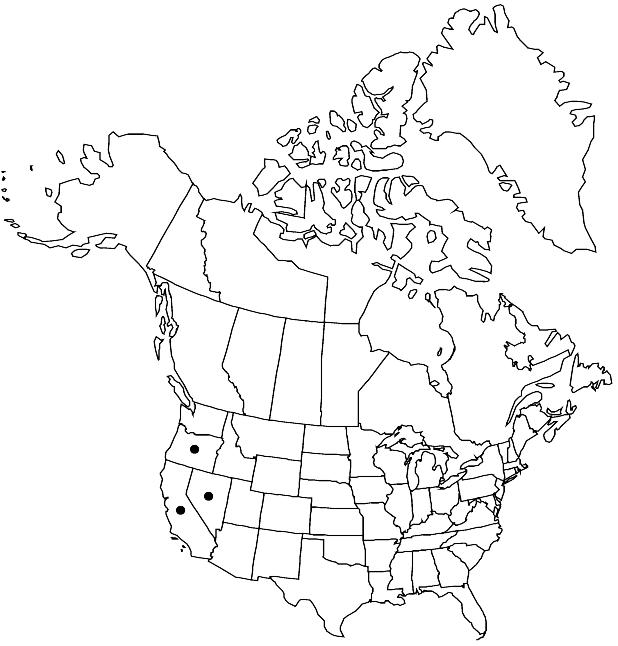Difference between revisions of "Boechera covillei"
Harvard Pap. Bot. 12: 237. 2007.
FNA>Volume Importer |
FNA>Volume Importer |
Revision as of 22:54, 16 December 2019
Perennials; long-lived; apomictic; caudex woody. Stems usually 1 per caudex branch, arising from center of rosette near ground surface, 0.5–2.5 dm, glabrous throughout. Basal leaves: blade oblanceolate, 1.5–5 mm wide, margins entire, ciliate proximally, trichomes (simple), to 0.4 mm, and distally, trichomes short-stalked, 2 or 3 (or 4)-rayed, 0.15–0.4 mm, surfaces glabrous. Cauline leaves: 2–7, not concealing stem; blade with auricles 0.2–1 mm, auricles rarely absent, surfaces of distalmost leaves glabrous. Racemes 2–9-flowered, unbranched. Fruiting pedicels ascending to suberect, straight, 6–20 mm, glabrous. Flowers ascending at anthesis; sepals glabrous; petals lavender to purplish, 5–6 × 1–2 mm, glabrous; pollen spheroid. Fruits ascending to suberect, rarely appressed to rachis, not secund, straight, edges slightly undulate (rarely parallel), 3.5–5 cm × 3–5 mm; valves glabrous; ovules 18–30 per ovary; style 0.2–1 mm. Seeds uniseriate, 4–5 × 3–4 mm; wing continuous, 1–1.5 mm wide.
Phenology: Flowering Jul–Aug.
Habitat: Rocky slopes in alpine meadows and open coniferous forests
Elevation: 2200-3500 m
Distribution

Calif., Nev., Oreg.
Discussion
Morphological evidence suggests that Boechera covillei is an apomictic species that arose through hybridization between B. howellii and B. lyallii (see M. D. Windham and I. A. Al-Shehbaz 2007b for detailed comparison).
Selected References
None.